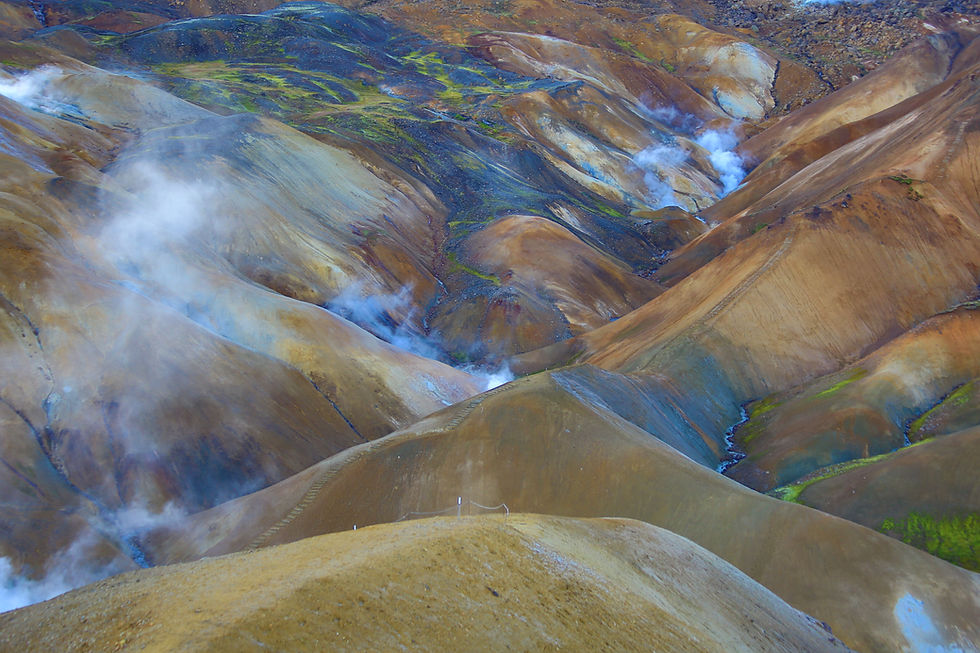Hanakapi'ai Falls, Kaua'i, Hawaii
- Nov 19, 2019
- 3 min read
Updated: Apr 19, 2024
The Hanakapi'ai falls is located off the beaten track along the famed Kalalau Trail on the island of Kaua'i. The round trip hike is about 8 miles in length and it takes about 6 hours to complete; including time spent swimming under the fall. Due to Kalalau's popularity, the state of Hawai'i has put a limit on the number of people allowed into the park. Non-residents need to obtain a permit through an online permitting system in order to access the park.
Access to the primary beach on entry to the park at Ha'ena was closed for sometime due to the massive landslide and flooding that occured on April 2018. It was recently reopened in June 2019; and so off we went to visit. The drive to Ha'ena was pleasant and traffic was quite sparse. There was a guard at the parking entrance waiting to check ID's and permits. Many were turned away as they chanced it and failed to acquire a permit. From the parking lot, there is a newly built bypass plank-walk that crosses a taro field. It's a short walk before reaching the actual Kalalau trailhead.
The Kalalau trail starts to climb right from the start but nothing too steep, even for a beginner hiker. The path is relatively rocky, uneven and muddy in certain spots.

After a few hundred yards or so, the trail opens up to a first glimpse of what's to come. The terrain is rugged, and shades of turquoise from green to deep blue tells of the depth of the ocean.

The first 2 miles to Hanakapi'ai beach meanders over gentle slopes and partially shaded sections. A few of the open sections can be brutally hot especially during the midday sun in the summer months. Just remember - what goes down must come up on the return trip so save some energy and water for the return leg.

The section just before Hanakap'ai beach tends to be quite busy with day hikers. During the peak season, there will be a grid lock due to the bottleneck river crossing where too many people are slowly picking their way across Hanakapi'ai stream. The beach is heavily bouldered, and the sea cave at the end of the beach reflects the heavy surf especially during the winter months. Depending on the time of the year, there may or not be a sandy spit. Otherwise it will just be a rocky beach with strong waves and currents. It is here that many hikers got swept out into the rough ocean during the rainy winter months as the stream can swell up many times it normal size; dragging unprepared hikers out into the ocean.
Once we crossed the stream safely, we came to a junction with toilets. This is the start of the Hanakapi'ai Falls trail. The right fork is the continuation of the Kalalau Trail and from this juncture, anyone traversing on it needs to have a specific "backcountry" permit.

Once we veered off the main Kalalau Trail inland, the vegetation started to encroach upon the trail. It is quite visible that this path is not as frequented as the main trail but it is still very manageable.
From here, there are several stream crossings so be prepared to get your feet wet. As we got closer to the waterfall, the trail got somewhat steeper with several boulder sections that require some scrambling but nothing too difficult. Just take caution as the rocks can be mossy and slippery.
After rock hopping and scrambling we finally caught our first glimpse of the waterfall! Peeking through the trees, it was well framed; giving it a mysterious and majestic feel that our final objective was within reach.

In about 2.5 hours, we finally reached the base of the waterfall. There were a handful of hikers who got there about the same time as us and we were all waiting to see who will be the first to brave the chilling water. It's actually a nice plunge into the ice cold water after working up a good sweat from getting here.
We took some time hanging around the base of the fall for some nature photography. There were some Hawaiian damselflies which are endemic to Hawaii. They can be found mostly near water features and wetlands.

There were also small fish in the fresh water pools.

Kauai's precipitous cliffs and hanging valleys with tall waterfalls should be experience at least once in your lifetime. Whether you see it on foot, by air, or by boat, the uninhabited Na Pali coast of Kaua'i is the most dramatic scene in the world where water meets land. This took place several millions of years ago when part of the island slid off, leaving the high cliffs we see today. The rest was the work of erosion over time, leaving behind the amazing fluted landscape that has become so iconic of the Na Pali Coast.















Comments